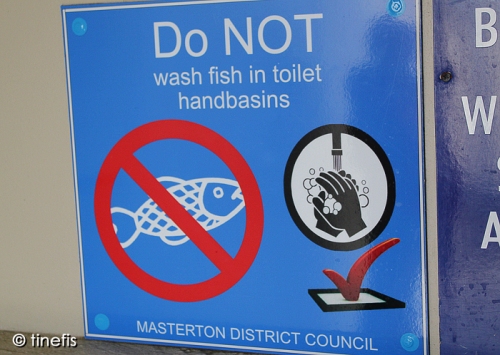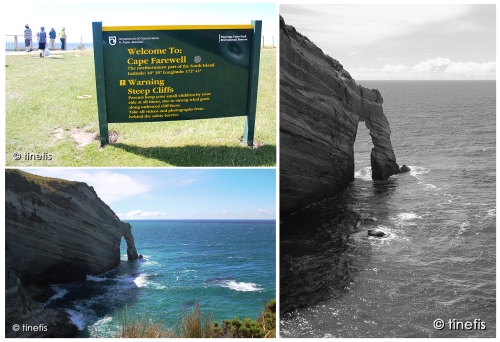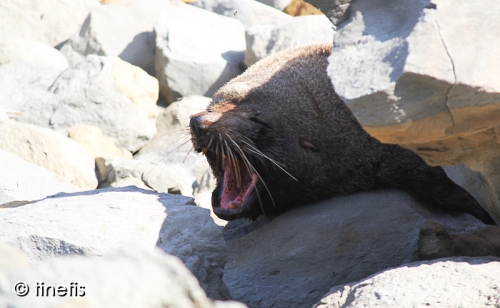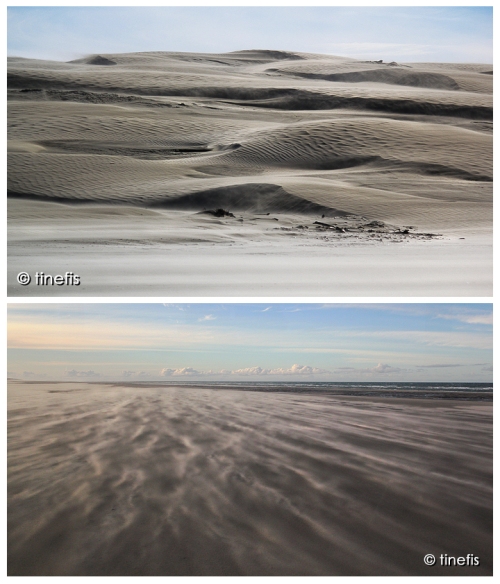Castle, Albatross, Penguins, seasickness and rain.
Dunedin is in Otago on the South Island in New Zealand. It is the country’s second largest city, and it was also the first city to be built. They’ve found archaeological finds which indicates that Maori people lived in the area around 1250-1300 A.E.
Whaling was a huge industry in New Zealand around 1830, and that was one of the reasons why Dunedin was built. The industry was so big, that the Southern Right Whale almost became extinct. Around 1860, they found gold in the area and that was another reason while Dunedin grew to become a big city.

Whaling was big industry in Dunedin, NZ, in the beginning of the 19th century.
You can also find the world’s steepest street in Dunedin, called Baldwin Street. Unfortunately we never got the time to visit this street.

The world's steepest street.
New Zealand’s only castle can be found in Dunedin. It is called Larnach Castle. The history around the castle is very long and complicated, so I will only give you a short and simplified version. =o) The Australian man, Larnach, came to NZ and he had a little money and decided to build a “castle” for his family to live in. The house was built between 1873 and 1887.
A lot of tragedies hit the family. All of Larnach’s daughters died either from childbirth or sickness. His first wife, died only 38 years old. Larnach married her sister, whom also died at age 38. He then married a much younger woman. Larnach was a politician and travelled a lot. His second oldest son started an affair with Larnach’s third wife. When the son sent a letter to his father, telling him that he’s gotten his wife pregnant, Larnach killed himself. They say that Larnach haunt the “castle” now. Some people have been pushed when they’ve been walking around the house.

Top: Larnach Castle. Below: View from the castle's tower.
The castle was almost totally ruined, when Barry and Margaret Barker, a newly wed couple, bought the castle. It took them many years to get the castle back to it’s original state. All that work must have caused trouble in the marriage for shortly after, they divorced. Margaret is still the owner of the castle which is very popular among tourists in the area. Margaret lived in the castle until recently. The castle is very beautiful and you can go on a guided tour in the castle, enjoy a coffee in the ball hall and wander around in the beautiful garden.

Nice farming nature in the Otago Peninsula.

Low tide in the Otago Peninsula.
We took a day long guided tour around interesting places in and around Dunedin. After the visit to the castle, we drove around Otago Peninsula and then we saw the Royal Albatross Colony at Taiaroa Head. First they introduced us to the Royal Albatross, told us interesting facts etc. Then we walked up a steep hill and I thought we were gonna walk around the hill and see the huge albatross. But we walked in to a little house with big, thick windows and spent 30 minutes up there, just looking. A bit booring. I really wanted to film and stuff. Total anticlimax. If you ever wanna see albatross, I recommend that you see them in Kaikoura on an Albatross Encounter cause then you can get up close and personal with these fantastic birds from a boat.
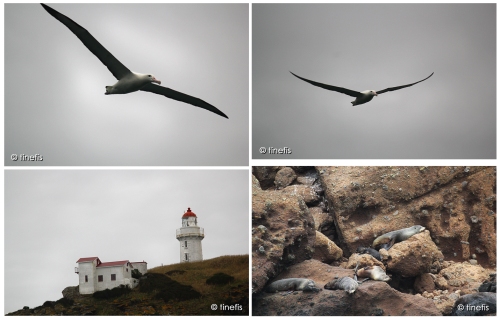
Taiaroa Head where you can see some albatross from far away. When we went by Taiaroa Head by boat we also saw the lighthouse and Fur Seals relaxing on the cliffs.
Our next stop on the guided tour was the Yellow-Eyed Penguins!!!! =oD Wow, that was amazing to see penguins in the wild! We were a big group of people though, so everyone got but a glimpse of the penguins before we had to make way for the next couple of people. A bit sad. No time to take beautiful photos or film something interesting. I don’t even have enough footage to put together a short video of the penguins. =o(
The Yellow-Eyed Penguin is around 75 centimeter tall and weigh around 5-8 kg. It is a very shy animal and therefore you walk around a network of covered trenches, leading to viewing hides, where you look at the penguins. We saw baby penguins as close as less than 1 metre from us! We could not reach out and touch the penguins even though they were so close, because their beaks are very sharp and can hurt you. Plus, they’re wild animals and they should stay wild as well. They are beautiful animals!

Beautiful Yellow-Eyed Penguins. Both baby and grown-up penguins. =o)
We saw the Royal Albatross Colony again in the afternoon, from a boat. We were on a boat tour around taiaroa Head and then out in the open ocean to look for interesting birds etc. The waves were quite high though and I started to feel a bit sea sick. We didn’t see many albatross on the boat tour either, just a couple flying high up in the sky. We did see the lighthouse though, and Fur Seals relaxing on the cliffs. The Boat Tour took us towards Dunedin Harbour and it started to rain on the tour. Most passengers went inside the cabin and enjoyed a hot cup of coffee, tea or chocolate. Quite cozy. =o)

- Just some birds we saw from the boat.
There are a ton of things to see in and around Dunedin. Make sure you have a minimum of 2 days to look around the area. And whatever you do, don’t miss out on a trip to the Yellow-Eyed Penguin Colony!










